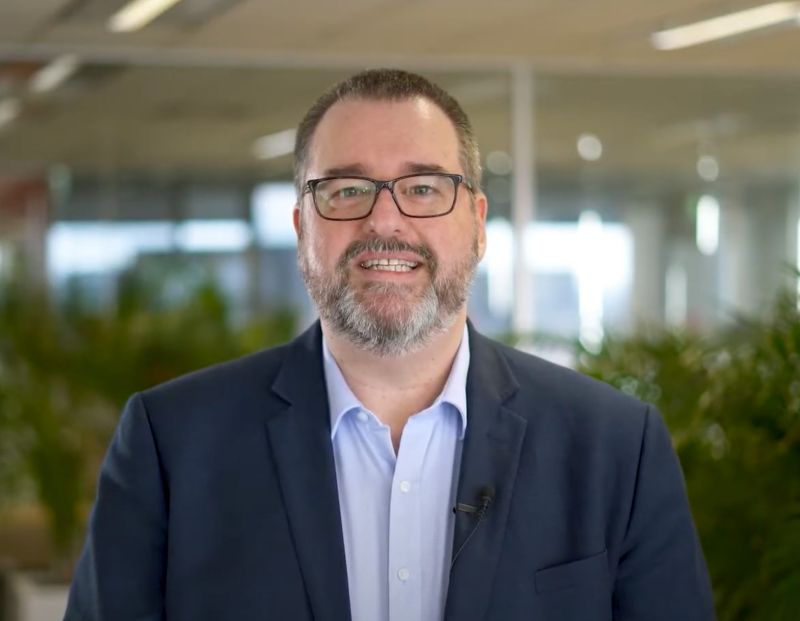Dark Web Monitoring
What threats to your organisation's security lie in the furthest corners of the Internet and on the Dark Web?

What threats to your organisation's security lie in the furthest corners of the Internet and on the Dark Web?
How we can assist:
The dark web is the unregulated part of the internet that is used by cybercriminals to buy and sell data, market tools for hackers and conduct other criminal dealings. Access to the dark web typically requires the use of tools such as TOR as well as specialised knowledge. Unlike most of the web that we use every day, the dark web is not indexed by search engines and doesn't use convenient and easy-to-remember domain names.
Cybersecurity threats loom large, and the dark web has emerged as a breeding ground for criminal activities that put individuals and organisations at risk. This article delves into the realm of dark web monitoring, shedding light on what it is, why it matters, and how it can protect you from lurking dangers.
The dark web is the digital equivalent of the black market. It is a place where stolen information and digital weapons are traded. Threat actors can buy everything they need to attack a target from ransomware programs, distribution networks such as botnets and stolen credentials for unauthorised access. Many of the tools and services used by criminals are even supported by help desks that operate on the same dark web forums.
Monitoring the dark web is not simply a matter of using a tool and watching for activity. Dark web monitoring requires specialised skills and contacts developed over many years with the goal of looking for and finding information that pertains to specific threats your organisation faces.
The internet has several parts: The surface web, the deeper web, and the dark web. These distinct layers offer diverse experiences and serve different purposes, shaping our online interactions and experiences. Let's delve into these layers to better understand the multifaceted nature of the internet.
The surface web are websites indexed through a search engine like Google. A forecast for 2020 shows that the Web is currently generating about 4 billion page views.
Deep Web pages contain pages that are difficult to find in public. These may include everything like a bank website or email, your health and wellness portals as well as many more sites requiring logging into or paying for the site's log-in and password.
The dark web consists of websites that can only be accessed via special software like Tor, and there are more than 200,000 hidden sites offering illegal services including the sale of drugs, weapons, and stolen data. The dark web is home to a number of criminal activities and it poses a serious risk to organisations when confidential data is exposed or leaked here.
The dark web is an obscure corner of the internet that isn't indexed by traditional search engines. Unlike the surface web, which is easily accessible and contains websites we visit daily, the dark web comprises encrypted networks and requires specific software, such as the Tor browser, to gain access to.
Within its depths, stolen data, compromised credentials, and malicious software are often exchanged, making it a haven for cybercriminals.
Imagine discovering that your login credentials or other sensitive data or corporate data are up for sale online on the dark web. The repercussions could be catastrophic. Dark web monitoring provides several key benefits:
Dark web monitoring enables you to stay one step ahead of threat actors. By identifying compromised data, you can take action before cybercriminals can exploit it.
By scanning for stolen information and compromised credentials, dark web monitoring helps safeguard your digital identity and prevents identity theft.
The moment your data appears on the dark web, you're alerted. This means you can swiftly respond, change passwords, and fortify your security systems.
For business organisations, dark web monitoring is essential. It helps protect their sensitive data, business information, trade secrets, and intellectual property from falling into the wrong hands.
The cybersecurity threats and risks your organisation faces are constantly changing. Dark web monitoring searches the dark web for pertinent information such as email addresses, company names and chatter about activity in your industry vertical.
Significant cyber attacks are not carried on on a whim by criminals. They require planning and access to tools, intelligence and methods. Monitoring the dark web gives organisations forewarning of potential attacks so they can adjust their security posture accordingly.
Dark web monitoring is a powerful cybersecurity threat intelligence tool that also enables organisations to engage in proactive threat hunting to learn about potential attacks before they start.
This results in faster and more effective incident response. When activity about your organisation or others in your vertical is detected, the dark web monitoring tool gives you a warning so you can be ready. It is also an important tool for detecting accidental data leaks.
In recent years, data breaches have become alarmingly common. These breaches can lead to the exposure of sensitive information, including personally identifiable information (PII), login credentials, and even financial account details.
Cybercriminals then capitalise on this stolen information, engaging in identity theft, perpetrating financial fraud, and sometimes even selling this data on the dark web for further exploitation. This is where dark web monitoring steps in as a crucial safeguard.
In an era where digitalisation has become an integral part of our lives, the protection of personal and sensitive information has never been more critical. However, recent incidents have highlighted the vulnerabilities that persist in the digital landscape, with data breaches affecting major companies like Optus and Medibank Private in Australia. Let's take a closer look at these breaches, their implications, and the lessons we can learn.
In recent times, Optus, one of Australia's largest telecommunications companies, found itself at the centre of a data breach incident. The breach exposed all the personal information and details of thousands of its customers, potentially compromising sensitive information such as names, addresses, contact numbers, and account details. The breach was a reminder that even well-established companies with robust security measures can fall victim to cyber attacks.
Optus responded promptly to the breach, taking measures to address the issue, secure affected accounts, and inform customers about the incident. The incident also underscores the importance of strong cybersecurity practices, not only in terms of prevention but also in how a company handles a breach to minimise the damage and regain customer trust.
Medibank Private, a prominent health insurance provider in Australia, also faced its share of data breach woes. The breach exposed sensitive information of a subset of its customers, including personal details and health-related data. Such breaches are particularly concerning, as they involve not only personal information but also data that can have implications on individuals' health and privacy.
Similar to Optus, Medibank Private acted swiftly to contain the breach, conducted thorough investigations, and notified affected individuals. The incident serves as a reminder that companies handling sensitive customer data, especially health-related information, must uphold the highest standards of cybersecurity and data protection to maintain the trust of their customers.
Dark Web Monitoring services combine various information gathering methods, tooling and expert knowledge to detect findings that may be advantageous to an attacker and not detected by traditional scanners and penetration testing.
Our reports are highly regarded for their business utility. They will detail your risks and provide a suggested course of action to remediate against the findings.
Our Dark Web Monitoring Consultants can identify what is to be found, originating from your organisation, beyond your network borders, that could pose a threat. Investigating, for example:
We look to see what shouldn’t be there… i.e. stolen data, personal information leakage, breached credentials, proprietary code etc. This can often be the first indication that you have had a breach!
Thales Cyber Services ANZ’s intelligence consultants can identify information that relates to the risks your organisation faces. This could come from activity on dark web markets and forums, within underground hacker communities, social media exposed risks, paste sites, Internet Relay Chat channels and the wider Internet.
Armed with deep and broad experience, Thales Cyber Services ANZ’s experts are skilled at identifying what shouldn’t be on the dark web, whether that’s stolen data, personal information leakage, breached credentials, proprietary code or other sensitive information. This can often be the first indication that you have had a breach or are likely to come under attack.
Dark web monitoring combines various information gathering methods, tooling and expert knowledge to understand what attackers are plotting. This complements traditional threat scanners and penetration testing. The reports Thales Cyber Services ANZ prepares are highly regarded for their business utility, identifying risks and provide a suggested course of action to ensure the protection of your organisation's information and system assets.
Dark Web Intelligence Snapshot
This is a point-in-time baseline intelligence engagement to gain an insight into publicly available information across a handful of pre-selected domains. It also includes a human component where we identify key staff, based on their roles in your organisation, and investigate their social media presence and if there is any potentially valuable information that can be used to target that individual.
Dark Web Intelligence Program
This is a continuously evolving intelligence engagement delivered quarterly, driven by client feedback. It includes identification and analysis key staff and their social media risks as in the Intelligence Snapshot service and also organisational elements, using a range of intelligence methods including OSINT, SOCMINT, HUMINT, DARKINT, GEOINT etc. This engagement can be both passive and active. The report is delivered every three months and is a point-in-time analysis.
Continuous Monitoring
Along with the Intelligence Program that provides quarterly reporting, this service includes continuous monitoring of the Dark Web. It covers threats such as new data breaches, databases for sale, confidential information leaks and new ransomware information. All positive alerts will be passed on and an initial assessment provided. Further investigation, or remediation will be at additional cost.
In an interview with TickerTV, Thales Cyber Services ANZ CIO, Michael McKinnon, explains the significance and dangers of the dark web, and its role in data breaches and ransom attempts.

Publishing data online has become a common modus operandi for cyber criminals—but will organisations even notice when it happens?

Dark web monitoring is a proactive cybersecurity practice that involves scanning the dark web for any instances of your personal or sensitive information. This includes data like login credentials, social security numbers, and financial account details. It's crucial because the dark web is a hidden part of the internet where cybercriminals often trade stolen data, compromised passwords, and engage in various illicit activities.
By monitoring the dark web, you can be alerted if your information appears in such places, enabling you to take immediate action to protect yourself from potential threats.
While traditional cybersecurity measures are important, they primarily focus on preventing external threats from breaching your defenses. Dark web monitoring, on the other hand, actively searches for signs of data that may have already been compromised. It offers a layer of protection beyond the standard security protocols, ensuring that you're aware of potential risks and can respond swiftly.
The frequency of dark web monitoring depends on your level of risk exposure. For individuals, periodic monitoring is recommended, especially after major data breaches. Businesses, however, should consider continuous monitoring due to the higher volume of data they handle. Regular scans help ensure that you're promptly informed of any suspicious activity related to your information.
Dark web monitoring is a valuable tool, but it's not a one-size-fits-all solution. It primarily focuses on identifying instances of compromised data. To ensure comprehensive cybersecurity, it should be complemented with other measures like strong password practices, regular software updates, and employee training on recognising phishing attempts.
For businesses & large organisations, the benefits of dark web monitoring extend to protecting customer trust and brand reputation. It helps prevent data breaches that could lead to hefty fines, legal actions, and damage to a company's image. By detecting compromised credentials and sensitive information early, businesses can mitigate risks and respond effectively.
Thales Cyber Services ANZ is a full-service cybersecurity and secure cloud services provider, partnering with clients from all industries and all levels of government. Let’s talk.